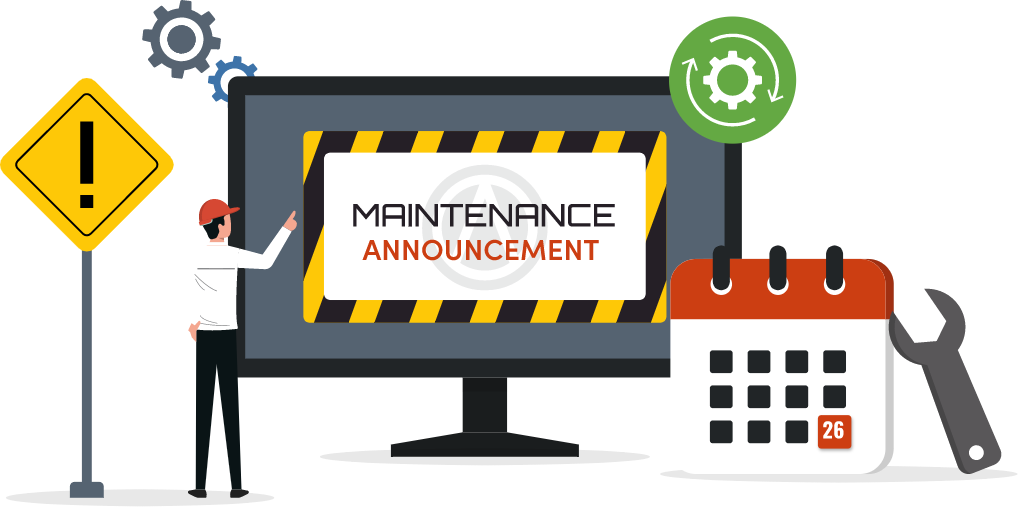What's the best way to reduce food waste in restaurants?
The best way to reduce food waste in restaurants is combining portion control, FIFO, and accurate par levels with technology. POS-integrated inventory systems track usage, forecast demand, and alert managers to expiring items, ensuring smarter ordering, fresher food, and higher profitability.
Top Inventory Management Strategies for Restaurants
Overview
Running a restaurant in 2025 comes with no shortage of challenges. Rising food costs, unpredictable supply chain disruptions, and shifting customer expectations all put constant pressure on margins. For many restaurant owners, inventory feels like an ongoing headache - something that takes time away from the bigger picture of growing the business. Yet, the truth is that effective inventory management isn't just a back-office task; it's one of the strongest levers you have to protect profitability and maintain control of your operations.
Food and beverage costs typically account for 28% to 35% of total restaurant sales, meaning even small mistakes can quickly add up. Overstocking ties up cash flow and increases waste, while understocking leads to shortages that frustrate guests and hurt sales. In an industry where every percentage point matters, these issues can be the difference between breaking even and thriving.
The good news is that inventory doesn't have to be overwhelming. By applying proven strategies and leveraging modern tools, you can streamline your process, cut down on waste, and gain the visibility needed to make smarter purchasing decisions. More importantly, these practices free up your time, allowing you to focus on your guests and team rather than chasing numbers.
Set Accurate Par Levels

One of the simplest but most effective inventory management strategies is setting accurate par levels. A par level is the minimum amount of a product you need to have on hand to meet demand until your next order arrives. Think of it as your "safety line" - when inventory drops below this threshold, it signals that it's time to reorder. Without par levels, many restaurants end up ordering based on guesswork, which often leads to either overstocking or running out of key items during busy shifts.
To set par levels effectively, start by reviewing historical sales data. Look at your average weekly usage of each ingredient, then factor in supplier lead times. For example, if you use 40 pounds of chicken per week and your supplier delivers twice weekly, your par level might be 20 pounds, plus an additional buffer for unexpected spikes in demand. It's important to adjust these numbers regularly, especially during seasonal menu changes, holidays, or promotional periods when sales patterns shift.
Par levels not only improve consistency but also free up working capital. By avoiding unnecessary overstock, you reduce the risk of spoilage and waste while keeping cash flow available for other needs. At the same time, having a system in place prevents the panic of last-minute shortages, which can frustrate staff and guests alike.
In practice, par levels work best when integrated into your POS or inventory system. Modern tools can automate these calculations, track usage trends, and alert you when items fall below their set thresholds. This means less guesswork, fewer surprises, and more predictable food costs.
By treating par levels as a living part of your operations - reviewing and updating them regularly - you'll create a strong foundation for more advanced inventory management strategies.
Transform Your Restaurant Operations Now!
Effortless Inventory Tracking with Altametrics!
Implement First-In, First-Out (FIFO)
Among the most reliable inventory management strategies,First-In, First-Out (FIFO) stands out as both simple and powerful. FIFO ensures that the oldest stock is used before newer deliveries, reducing spoilage, improving food safety, and maintaining consistent quality for your guests. Without it, products can sit forgotten in storage until they expire, leading to unnecessary waste and higher costs.
Implementing FIFO starts with organization and labeling. Every time a new order arrives, staff should clearly mark delivery dates on boxes and containers. Items should then be rotated so that older stock is placed in front and newer stock behind it. This applies across all storage areas - walk-in refrigerators, freezers, dry storage, and even bar supplies. Training your team to follow this process consistently is essential, since one skipped rotation can undo weeks of careful planning.
The financial benefits are significant. According to industry estimates, food waste can cost restaurants 4-10% of their total food purchases. FIFO directly combats this by making sure ingredients are used within their optimal lifespan, keeping costs under control and ensuring menu items taste as intended. It also helps with compliance, since expired food not only increases waste but also poses health and safety risks.
Technology can make FIFO easier to enforce. Some POS-integrated inventory systems allow you to track expiration dates, flag high-risk items, and generate alerts before products go bad. Even without advanced tools, maintaining simple checklists for deliveries and storerooms can dramatically improve compliance.
By turning FIFO into a habit rather than an occasional task, you'll keep shelves organized, reduce waste, and gain peace of mind knowing that your kitchen is always serving fresh, safe, and high-quality food.
Use Inventory Tracking Tools and POS Integration
Relying on clipboards and spreadsheets to track inventory may have worked in the past, but in 2025, restaurants need more efficient, data-driven systems. Manual tracking is not only time-consuming, it's also prone to human error - numbers get rounded, items are missed, and discrepancies go unnoticed until costs spiral out of control. That's why one of the most impactful inventory management strategies is adopting inventory tracking tools that integrate directly with your POS system.
A modern POS system can track sales in real time, automatically deducting items from inventory as menu items are sold. This eliminates guesswork and gives you an accurate view of stock levels at any given moment. For example, if your POS knows that each burger sold uses one bun, one patty, and two slices of cheese, it will automatically adjust those items in inventory after each sale. This level of precision helps identify variances quickly - whether from waste, theft, or portioning mistakes.
Integration also provides powerful reporting capabilities. Restaurant owners can generate reports on usage patterns, recipe-level costing, and variance analysis. These insights allow you to forecast demand more accurately, negotiate better with suppliers, and make smarter menu decisions. Instead of waiting until the end of the month to realize food costs are high, you can see trends daily and take corrective action before problems escalate.
Even small operators benefit from these systems. With cloud-based tools, you don't need a large IT budget to access features like automated reordering alerts, vendor price tracking, and mobile counting apps for staff. The result is less time spent chasing numbers and more time focusing on guests and staff.
By embracing technology and linking your POS with inventory management, you transform the process from a manual chore into a reliable, automated system that safeguards profits and keeps your kitchen running smoothly.
Schedule Regular and Accurate Counts

Even with the best technology, nothing replaces the importance of regular and accurate inventory counts. While software provides real-time tracking, those numbers are only as reliable as the data you feed into the system. If deliveries are miscounted, waste isn't recorded, or items go missing, discrepancies can snowball. That's why creating a consistent counting schedule is one of the most effective inventory management strategies you can implement.
A strong approach usually combines three types of counts - daily, weekly, and monthly. High-value or fast-moving items, such as proteins, alcohol, or dairy, should be checked daily or at least several times per week. Weekly counts are useful for mid-range items to catch variances before they become costly. A full physical inventory at the end of the month ties everything together and ensures your numbers match your POS and financial reports.
Accuracy is critical. Staff should be trained not to round numbers or estimate weights. For example, instead of saying "about half a box of tomatoes," they should weigh it and record the exact number. Using digital scales, bar-code scanners, or mobile apps can speed up the process while improving precision. Spot checks - surprise counts of certain items - are also a good way to discourage theft and maintain accountability.
The benefits go beyond just balancing numbers. Regular counts provide insight into waste, shrinkage, and usage trends. They help you identify issues like over-portioning or supplier shortfalls quickly, before they harm your margins. Consistency also builds discipline - when your team knows inventory is tracked closely, accuracy improves across the board.
By committing to routine and precise counts, you gain more than accurate records; you gain control. With a clear picture of your stock at all times, you can plan purchases confidently, reduce stress for staff, and protect your profitability.
Control Portion Sizes and Standardize Recipes
One of the hidden drivers of high food costs is inconsistent portioning. Without clear standards, two cooks preparing the same dish may serve dramatically different amounts of protein, sauce, or sides. Over time, even small variances add up - both in wasted food and in lost revenue. Standardizing recipes and controlling portion sizes ensures that every plate leaving the kitchen is consistent, cost-effective, and aligned with guest expectations.
The process begins with creating standard recipe cards for every menu item. These should include detailed ingredient lists, precise measurements, portion sizes, and plating instructions. Recipe cards aren't just for new employees - they act as a reference for the entire team to keep quality and consistency in check. By training staff to follow these recipes closely, you avoid guesswork and reduce the risk of overusing expensive ingredients.
Portion control tools make this even easier. Items like measuring scoops, ladles, and digital kitchen scales provide accuracy and reinforce the standard. For proteins such as steaks, chicken breasts, or fish fillets, pre-portioning during prep shifts ensures cooks don't have to estimate portions during service. This approach not only manages costs but also improves speed in the kitchen, since ingredients are ready to go.
From the guest's perspective, consistency is key. Regular customers return because they expect their favorite dish to taste and look the same every time. Inconsistent servings not only hurt your bottom line but can also damage trust with your guests.
By controlling portion sizes and standardizing recipes, you protect profit margins, reduce waste, and strengthen your brand's reputation for quality. It's a simple shift that pays off daily, both financially and operationally.
Advanced Inventory Management Tactics
Beyond the fundamentals, there are additional strategies that can take your inventory management to the next level. These tactics build on the basics and help owners fine-tune operations for stronger cost control, efficiency, and long-term growth.
Forecast Sales Accurately
Accurate forecasting allows you to align purchasing with demand. Look at historical sales data, upcoming holidays, local events, and even weather trends to predict what your restaurant will need. This reduces the risk of overstocking and minimizes costly last-minute orders.
Negotiate with Suppliers
Your relationship with suppliers directly impacts your bottom line. Work with vendors to secure better pricing, flexible delivery schedules, and volume discounts. Even small savings on staple items like produce, meat, or dairy can add up to thousands of dollars annually.
Track Waste and Theft
Every item thrown away or unaccounted for affects profits. Set up a waste log where staff record discarded items and reasons for disposal. Also, monitor high-risk items like alcohol to deter theft. Transparency fosters accountability and highlights areas where training or adjustments are needed.
Adopt Just-in-Time (JIT) Ordering
JIT minimizes holding costs by receiving goods closer to when they're needed. While this requires reliable suppliers, it keeps inventory lean, reduces spoilage, and improves freshness. It's especially effective for perishable items like seafood, produce, and baked goods.
Leverage Reports for Smarter Decisions
Use inventory and POS reports to make data-driven choices. Analyze food cost percentages, variance reports, and menu item performance to refine purchasing, adjust pricing, or remove low-margin dishes. This turns raw numbers into actionable insights that directly improve profitability.
Together, these five advanced strategies strengthen control, reduce waste, and give you the confidence to run a leaner, more profitable operation. They may take time to implement fully, but once in place, they become daily habits that protect your margins and ensure your kitchen runs smoothly.
Turning Strategy into Daily Discipline
Inventory management isn't a one-time project; it's a daily discipline that directly shapes the health of your restaurant. By setting accurate par levels, enforcing FIFO, leveraging POS-integrated tools, scheduling counts, and controlling portions, you create a strong foundation. Layering on advanced tactics like sales forecasting, supplier negotiations, waste tracking, just-in-time ordering, and data-driven reporting ensures your operation is not only efficient but also resilient in the face of rising costs and shifting demand.
The real key is consistency. When you and your team follow these proven strategies regularly, small improvements compound into big results - less waste, smoother operations, stronger margins, and more time to focus on what matters most- delivering a great guest experience.
As a restaurant owner, you don't have to manage this process alone. Technology can simplify the heavy lifting, automate tedious tasks, and provide insights you'd never see on a spreadsheet. That's where Altametrics comes in.
Take the Next Step with Altametrics
Altametrics offers a powerful suite of restaurant management tools designed to make inventory easier, smarter, and more profitable. From automated tracking and forecasting to supplier management and real-time reporting, Altametrics helps you gain control over food costs, reduce waste, and improve decision-making across your business.
If you're ready to master inventory management and unlock the full potential of your restaurant, explore how Altametrics can transform your operations.
Discover Altametrics Solutions by clicking "Schedule a Demo" below.

































































































































































































































































